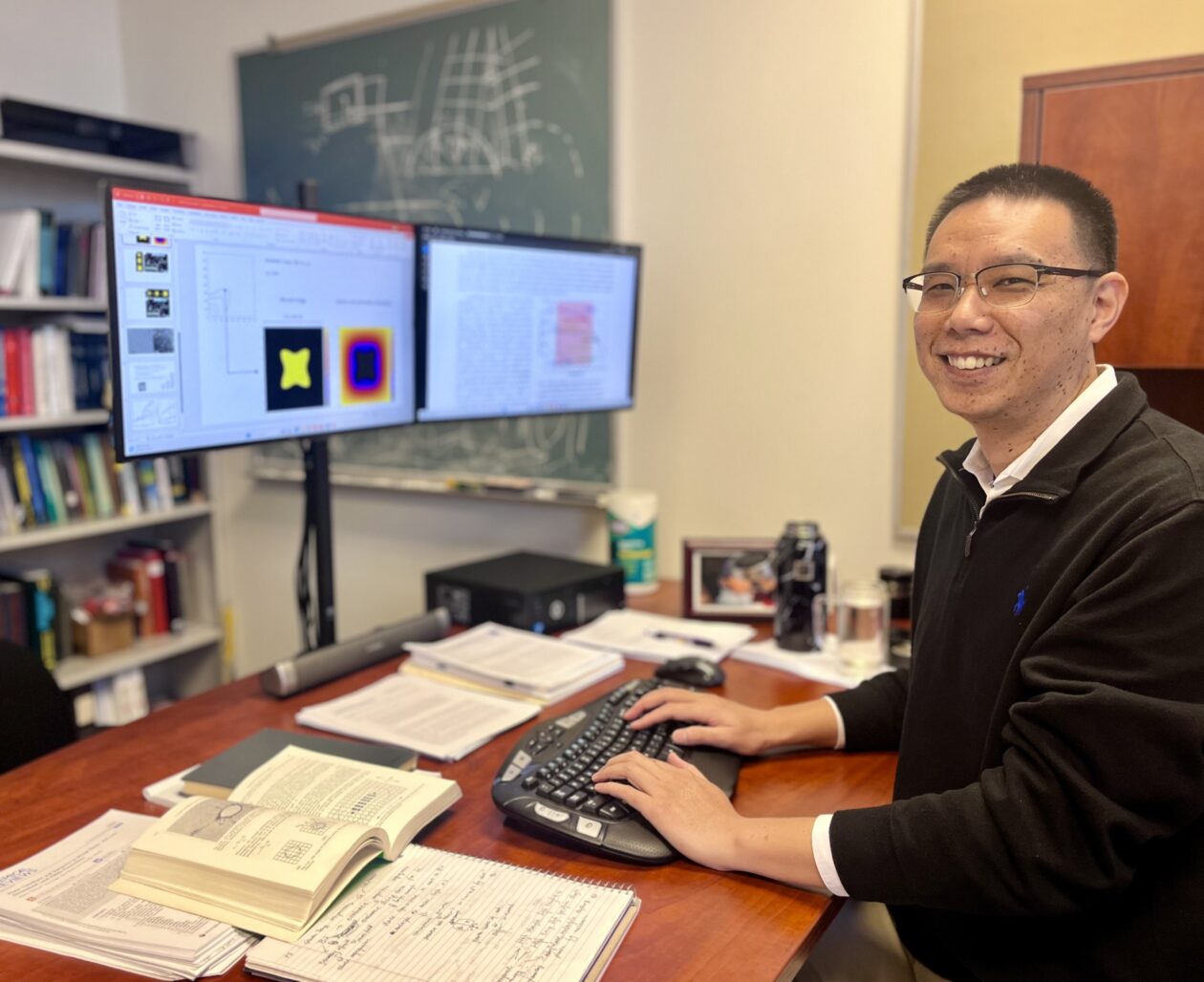Engineers Week: Q&A with Dr. Yijia Gu, assistant professor of materials science and engineering
Posted by Greg Edwards

Dr. Yijia Gu in his office in McNutt Hall. Photo by Greg Edwards/Missouri S&T.
Dr. Yijia Gu joined Missouri S&T in 2019 as an assistant professor of materials science and engineering. Here is a Q&A with Gu in commemoration of National Engineers Week 2025.
How would you explain what the field of materials science and engineering entails?
Materials science and engineering involves studying the processing, structures, properties and performance of various materials, such as metals, ceramics, polymers and composites to develop and improve products across industries. It combines principles like physics, chemistry and mechanical engineering to understand how processing influences material properties and to design materials with specific characteristics.
What aspects of this field do you find the most fascinating?
I am captivated by phase transformations in materials — or the transitions between different structural states. These transformations can significantly alter the properties of a material. For instance, in swordsmithing, quenching induces a phase transformation that dramatically hardens the blade. Understanding and controlling such transformations enables the design of materials with tailored properties for various applications.
One of your areas of expertise relates to ferroelectric materials. Can you explain what these materials are and why studying them is important?
Ferroelectric materials possess a spontaneous electric polarization that can be reversed by an external electric field. This property makes them valuable in applications such as non-volatile memory, actuators and sensors. Studying these materials is crucial for advancing electronic components, improving energy storage systems and developing new technologies in computing and telecommunications.
The 2025 theme for National Engineers Week is “Design Your Future.” How does your work as a researcher and educator fit with this theme?
I am leading two projects: one aims to enhance aluminum recycling through advanced manufacturing technologies, improving efficiency and sustainability in material reuse. The other focuses on developing novel ferroelectric materials for non-volatile memory applications, potentially revolutionizing computer chip technology. As an educator, I guide students to think critically and innovatively, equipping them with the knowledge to design and engineer material solutions that will shape the future.
What advice do you have for students interested in studying materials science and engineering?
Embrace curiosity and hands-on experiences. Experiment in labs, seek internships and learn from every success and failure. Materials science spans chemistry, physics and engineering, so building a strong, interdisciplinary foundation is key. Always stay open to new ideas because material breakthroughs often come from unexpected directions.
Leave a Reply